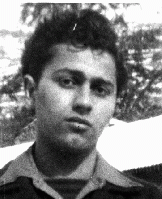
Leo Bretholz
Born: March 6, 1921
Vienna, Austria
Leo was the oldest child and only son of Polish immigrants in Vienna. His father, a tailor and amateur Yiddish actor, died of an illness in 1930 when Leo was 9. His mother supported the family by working as an embroiderer; Leo helped out by looking after his two younger sisters. They lived in one of Vienna's large Jewish districts on the east side of the Danube Canal.
1933-39: Anti-Jewish sentiment escalated after Germany annexed Austria in 1938. Jewish men, including some of Leo's uncles and neighbors, were arrested every day. Leo was 17 and afraid it could happen to him, so his mother urged him to flee Austria. He took a train to Trier, Germany, and swam across the Sauer River to Luxembourg. Once there, a relief group assisting refugees from Germany and Austria smuggled him to Belgium.
1940-44: Germany invaded Belgium in 1940 and Leo was deported to a refugee camp in France. He escaped by crawling under the fence, but was arrested in 1942 and eventually sent to the Drancy transit camp. En route to Auschwitz by cattle car, Leo and a friend worked all day to pry open the bars of the window. Driven by fear and hoping for luck, Leo leapt from the train. With the underground's help, he got false papers as "Max Henri Lefevre" and worked for the underground forging IDs and locating German troops.
After D Day, Leo worked with refugees in Limoges, France. His mother, sisters and 55 other relatives perished in the Holocaust. Leo immigrated to the United States in 1947.